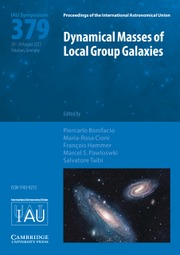No CrossRef data available.
Article contents
Kyiv monitoring program of spectral line variations with the 11-year cycle
Published online by Cambridge University Press: 27 November 2018
Abstract
Kyiv program of monitoring of long-term variation of solar spectral lines at the horizontal solar telescope of the Main Astronomical Observatory of Ukraine is described. The aim of the program is to clarify the issue how the physical parameters of the quiet solar atmosphere change over the 11-year cycle of solar activity. The diagnostics of the atmospheric variation includes analysis of more than 40 spectral lines of neutral and ionized chemical elements observed at the solar disk and at the limb near north and south poles with high spectral resolution. The results of monitoring show that during 2012–2017 a line core depths and a line full widths at half maximum respond to the cycle modulation of the global unsigned magnetic field of the Sun. Such a correlation can be explained by assuming that temperature gradient of the solar photosphere is growing with solar activity.
Keywords
Information
- Type
- Contributed Papers
- Information
- Copyright
- Copyright © International Astronomical Union 2018

